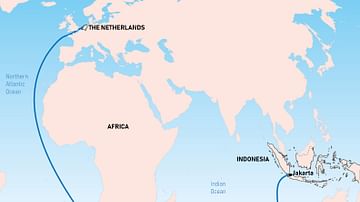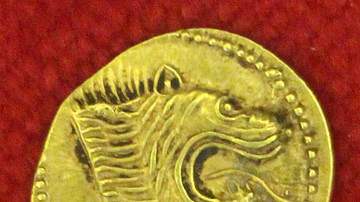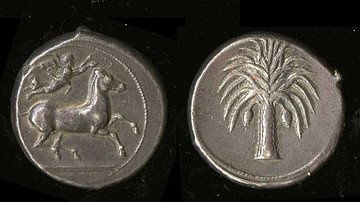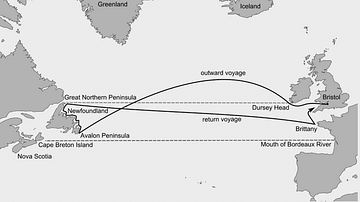Search
Search Results

Image
The Brouwer Route
The Dutch East India Company's favoured route from Europe to southeast Asia was known as the Brouwer Route. It was discovered by Dutch explorer Hendrik Brouwer (c. 1581-1643) in 1611 and halved the sailing time from the Netherlands to the...

Image
The African Slave Trade, c. 1750
By 1750, Africa had emerged as the center of three major slave-trading systems: the transatlantic, trans-Saharan, and Indian Ocean trades. These interconnected networks linked African societies to European, Middle Eastern, and Asian markets...

Article
Trade in Ancient Greece
Trade was a fundamental aspect of the ancient Greek world and following territorial expansion, an increase in population movements, and innovations in transport, goods could be bought, sold, and exchanged in one part of the Mediterranean...

Article
Trade Unions in the British Industrial Revolution
Trade unions were formed in Britain during the Industrial Revolution (1760-1840) to protect workers from unnecessary risks using dangerous machines, unhealthy working conditions, and excessive hours of work. The trade union movement was vigorously...

Image
Map Showing William Dampier's 1699 Expedition Route
Map showing William Dampier's expedition along the west and northwest coast of New Holland (Australia) and the coasts of Timor, New Guinea and New Britain in 1699 aboard the HMS Roebuck.

Article
Trade in the Byzantine Empire
Trade and commerce were essential components of the success and expansion of the Byzantine Empire. Trade was carried out by ship over vast distances, although for safety, most sailing vessels were restricted to the better weather conditions...

Article
Etruscan Trade
The Etruscan civilization flourished in central Italy between the 8th and 3rd century BCE, and their prosperity was largely based on their exploitation of local mineral resources, both through manufactured goods and trade. The Etruscans exchanged...

Article
Carthaginian Trade
The Carthaginians, like their Phoenician forefathers, were highly successful traders who sailed the Mediterranean with their goods, and such was their success that Carthage became the richest city in the ancient world. Metals, foodstuffs...

Teaching Material
Phoenician Maritime Trade and Cultural Exchange
This lesson plan has two parts. During the first part, students will watch a video introducing the Phoenicians and answer the questions on Worksheet #1. In the second part, students will participate in a trading simulation activity which...

Image
John Cabot's Route to Newfoundland
The Italian explorer John Cabot (aka Giovanni Caboto, c. 1450 - c. 1498 CE) sailed from England to eastern Canada in 1497 CE. His exact route and points of exploration are unclear and the map is therefore only an approximate guide.